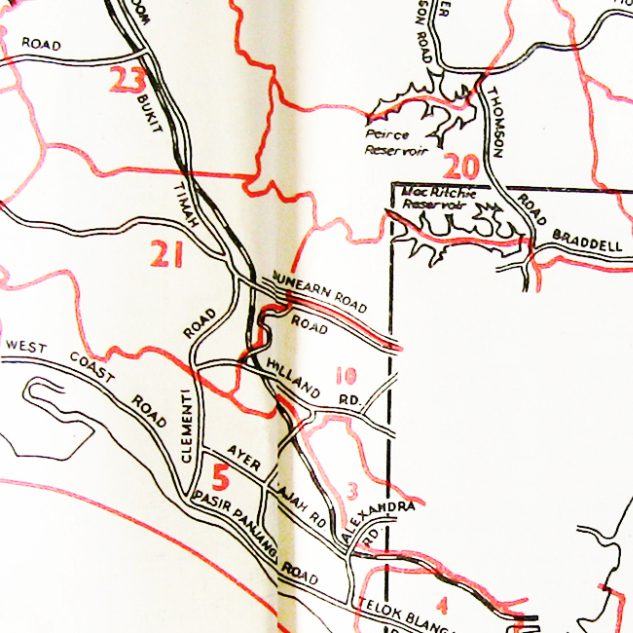My Work
There are 2 posts filed in My Work (this is page 1 of 1).
From the Rural to the Urban: A Place for (Public) Art in the City through The Artists Village
ABSTRACT OF PANEL
This panel examines The Artists Village (TAV) and its shifting relationship to the city. In the late 1980s, TAV consciously situated themselves away from the urban centre in an attempt to rethink art making in rapidly urbanising Singapore. The first paper posits the rural as a site for ‘alternative’ art practice and collaborative forms of art making examined in relation to engagement with the urban as a space for social and cultural action (Seng Yu Jin, National Gallery Singapore). When faced with a situation where there was no longer the rural, TAV’s relationship to the rural-urban conundrum shifted in an (afterall) city-state faced with a perpetual contestation for land use. The second paper considers ‘how’ and ‘why’ TAV artists in the ’Post-Ulu’ period engaged more directly with the city and its public spaces, for example organising more critically engaged and issues-based public exhibitions (Adrian Tan, NTU ADM). In the last paper, a search for the ‘collective’ is mapped through the understanding of the interactions and friendship between members as important developments in the historical reading of TAV (Wong Tien Wei, Post-Museum). Through the discursive trajectories of each paper and considering the circumstances surrounding collective art-making, socio-cultural contexts of a changing Singapore and the artistic strategies of The Artists Village- a place can then be found for TAV in the City.
PAPER 1. The Artists Village: The Rural as Fringe and Alterity
SENG YU JIN, THE NATIONAL GALLERY SINGAPORE, SINGAPORE
The Artists Village (TAV) was formed within a rural-scape (or kampong) at 61-b Lorong Gambas, Sembawang in 1988. TAV engendered radical shifts in generating new ways and manners of thinking and making art in the history of contemporary art in Singapore. They were art historically significant for producing work that is challenging, intellectually rigorous and dealing with current issues in the late 1980s, a period marked by a sense of urgency and impetus for artists to critically re-look and examine existing assumptions, values, and concepts of art-making. This paper situates the location of TAV in a rural farm as a conscious artistic strategy to set themselves in tension and in distance away from the urban centres of Singapore. The deliberate intention to distance themselves by establishing a space for ‘alterity’ in the fringes of Singapore that was rapidly urbanising city-state in the 1980s provided a site for ‘alternative’ artistic practices that were experimental in expanding the thinking and making of art. The concept of the ‘rural’ as a productive site and concept for collaborative forms of art making between forms of art making, nature and the performative is examined in relation to TAV’s continued engagement with the ‘urban’ as a new space for social and cultural action.
PAPER 2. The Artists Village: Negotiating and Engaging the City
ADRIAN TAN, THE ARTISTS COMPANY AND NTU ADM, SINGAPORE
The paper focuses on the ‘Post-Ulu’ period of The Artists Village (TAV) and the various art events, happenings and exhibitions from 1998 to 2008. The ‘Post-Ulu’ period in TAV’s history is marked by a period of negotiating and engaging the city, where the younger artists were faced with a situation where there was no longer the rural as an ‘alterity’. The artistic strategies of this younger grouping of artists leaned more towards engaging directly with the city and its public spaces. These new tendencies and approaches continued TAV’s engagement with the urban and marked a widening of the social practices of the younger artists. Together, they forged connections to international tendencies in curatorial and art practices, organised more critically engaged or issues-based public exhibitions and participated in large-scale projects or exhibitions outside of Singapore. It is through these case studies that enable the situating of TAV in negotiating and navigating its way around the city, expanding the thinking and making of art against Singapore’s rapid social and urban changes.
PAPER 3. In search of the collective in The Artists Village
WONG TIEN WEI, POST-MUSEUM, SINGAPORE’
The story of The Artists Village (TAV) often focused on the individual artists and their artworks while the interactions between its members, friendships, art strategies, documentation work and other cultural activism-type activities of TAV are seen as ‘peripheral activities’ and found only in the form of captions, timeline, charts, and documentation. The historicizing of collectivity and collaborative practices are never straight-forward and easy because such practices innately generate critique and question the modernist reification of the artist as an autonomous individual within modernist art (Enwezor, 2006). This paper argues that these ‘peripheral activities’ of TAV need to be given a more thorough historical definition. As it is the confluence of artists, friendships, circumstances and contexts rather than ‘pure artistic genius’ that shape the artistic identity of TAV. The ‘peripheral activities’ are central to understanding them as an art collective and from that see their contribution to contemporary art in Singapore.
CONCLUSION
Dealing with works of art that in the social sphere that’s not simply activist, community art or site-specific artworks, this discussion has taken on an art historical trajectory in looking at the shifting relationship of artistic practices in Singapore. Although largely hinging on social tendencies inherent and omnipresent in a specific audience (of local artists, academics, critics, and curators) set within an artistic realm, the impact of such practices is questioned in relation to the general public(s). While large shifts are taking place in art institutions and state-sanctioned movements in promoting more ‘grounds-up’ initiative, this paper questions what came before such an impetus was set in motion by the state. In order to understand such a top-down tendency, this panel shows that a greater study of what had transpired in the 1990s through to the early 2000s is needed to assess the initial fruition of turns towards the social by artists in the city-scape.

